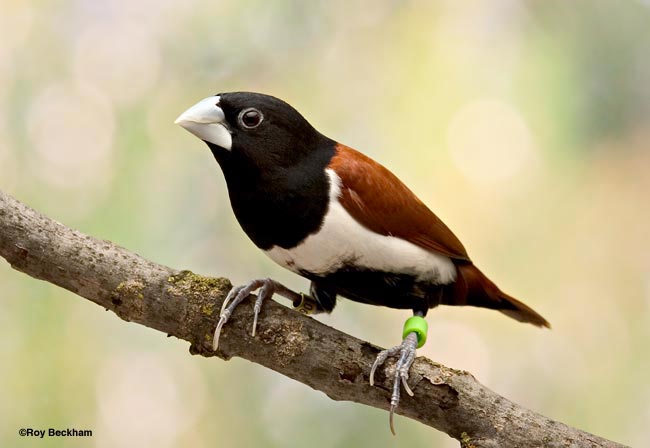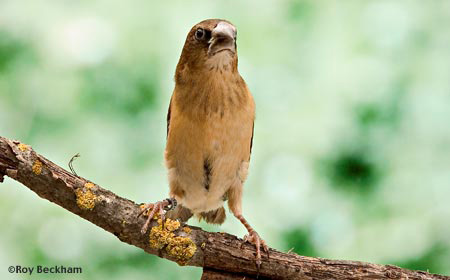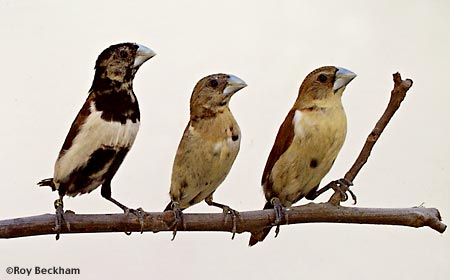




 |
|
|||||||||||||||||||||
 |
|
|
|
|
|
|
|
|
|
|||||||||||||
|
|
|
|
|
|
||||||||||||||||||
|
|
|
|
|
|
|
|
|
|
||||||||||||||
|
|
|
|
|
|
||||||||||||||||||
|
|
|
|
|
|
|
|
|
|
||||||||||||||
|
|
|
|
|
|
||||||||||||||||||
|
|
|
|
|
|
|
 |
|
|||||||||||||||
 |
 |
|
||||||||||||||||||||
|
|
|
|
||||||||||||||||||||
|
|
|
|
|
|
|
|
|
|
|
|
|
|
|
|
|
|
|
|
|
|
|
|
| Tricolor Munia - Lonchura malacca | ||||
 |
||||
| Tricolor Munia | ||||
|
Common Names Description Diet Breeder's Notes The nest was woven from coco fibers and a few other grasses. Soft materials were ignored for the most part. Certainly feathers were not sought in the construction of the nest. Clutches of 4-8 eggs were laid with 5-6 being the norm. Incubation started after the third egg and the sexes share in the incubation duties, but the hens are really steady sitters. It was often difficult to monitor the progress of the incubation or the chicks because the birds would not leave the nest. Incubation was approximately 13 days before the typically naked, pink with light fuzz mannikin chicks hatched. I fed the parents egg food in the mornings along with all the other birds and soaked/sprouted paddy rice late in the afternoon. Chicks were usually well fed, but some early attempts at breeding had the parents pitching the young out of the nest. After they got the swing of things, they were steady and reliable breeders. Chicks will fledge after about 21-25 days and are dull brown in color with black beaks (see below), looking like so many other young mannikins. In fact, in Puerto Rico the young Tricolors were trapped with young Spice finches which they look very much like and you would have to look closely to tell them apart or wait for bits of adult color to come through. Usually you can see the Tricolor beak changing to gray while the Spice finch beak will remain black. The young are usually weaned in a couple of weeks, but I always left them with the parents for 3 or more weeks before putting them in a holding cage with other Tricolors. I wanted to make sure the males maintained the true Tricolor song as a couple of early fostered males learned an altered song that in addition to being wrong was also much louder than normal. It takes several months for the Tricolor young to molt into adult plumage. Pairs would usually go back to nest after the young were weaned. I would offer them some additional nesting material to fix up their nest or if badly soiled, would remove the old material and let them start again. The process of building the nest seems to stimulate them into breeding anyway. After about three clutches I would give them a rest. Breeding seemed to take place from late fall through spring. When set back up, the pairs were usually quite eager to get started again. The domestically raised birds were much steadier in the smaller breeding cages and readily took to the standard nest boxes. Established pairs took to nest boxes and began building nests within hours of being placed back into the breeding cages. Additional Notes Many of the Tricolors that used to be imported into the U.S. were captured in Puerto Rico where they are a feral species. However, hurricanes and changes in crops grown on the islands has forced the Tricolors to higher elevations and decreased their numbers. As a result, the trappers have not be able to capture significant numbers of them and imports are now rarely seen from PR. Future imports will likely come from India again. |


Immature Tricolored Nuns. They fledge with black beaks that quickly turn silver. Plumage takes a while longer.
